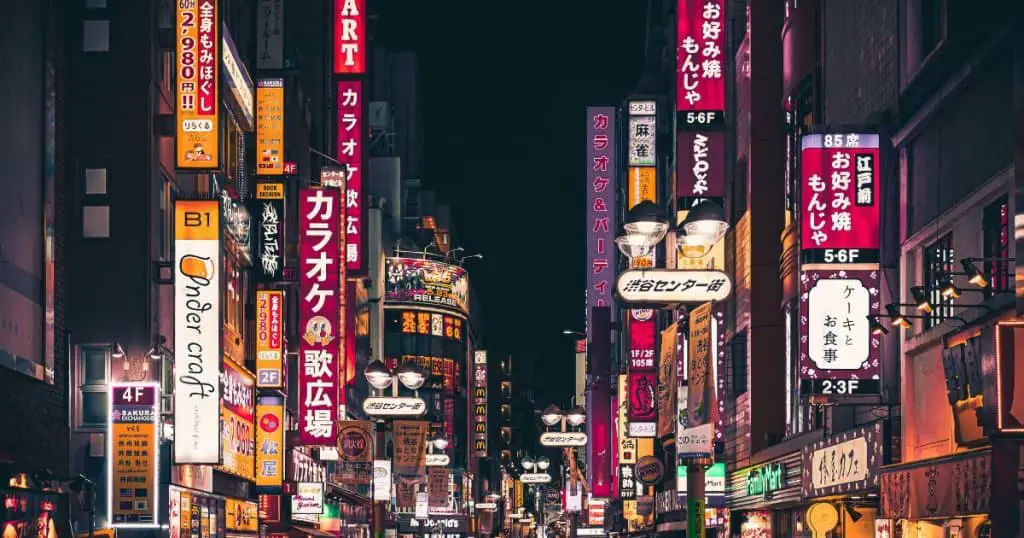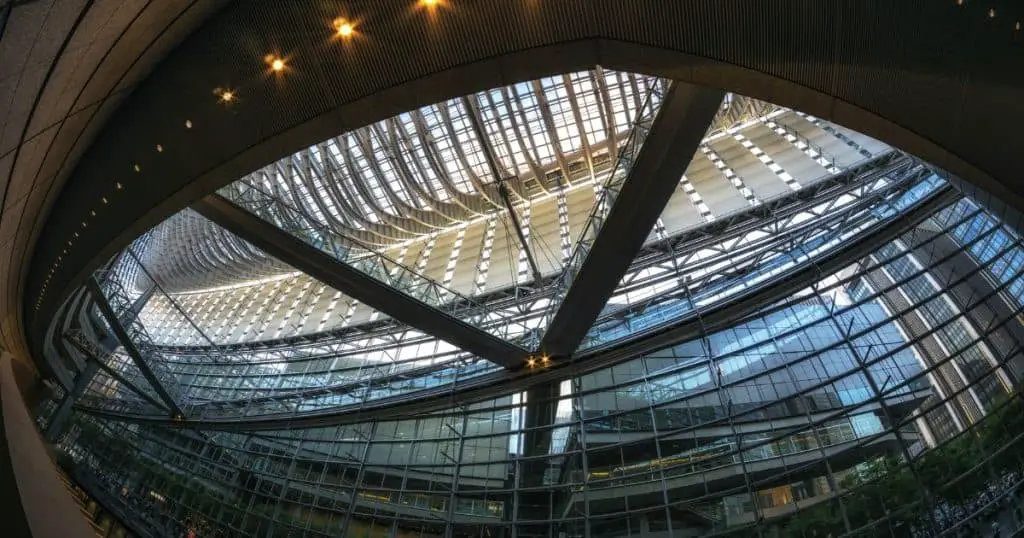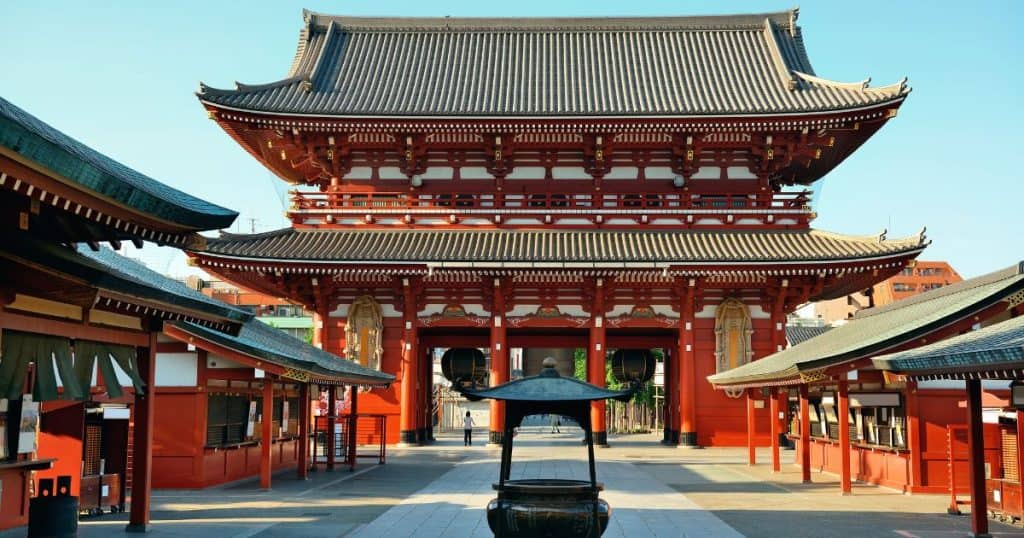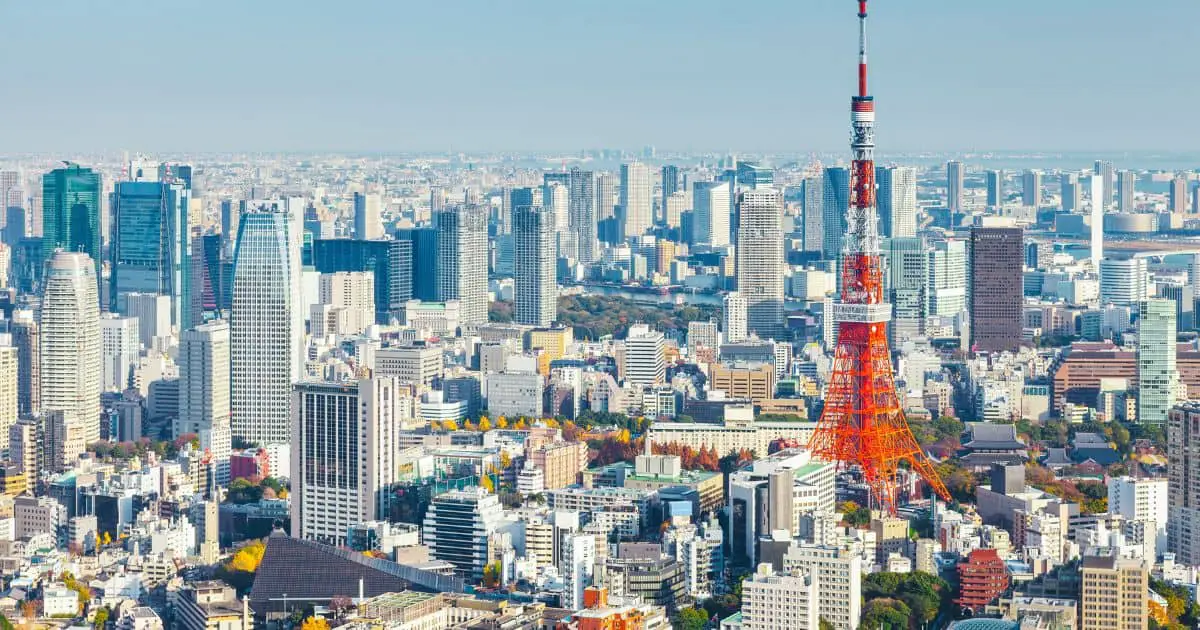If you’re an architecture enthusiast, Tokyo is a city that you can’t afford to miss. The city is a hub of incredible architecture that will leave you in awe. From towering skyscrapers to ancient temples, Tokyo has it all. Whether you’re interested in traditional Japanese design or modern architectural marvels, there’s something for everyone in this city.
Some of the most iconic buildings in the world can be found in Tokyo. The city is home to some of the most renowned architects, and their work is showcased throughout the city. You can stroll through the streets and be amazed by the incredible designs that surround you. Whether you’re an architect or simply an admirer of beautiful buildings, Tokyo is the perfect destination for you. In this article, we’ll take a look at some of the best places to visit in Tokyo for architecture admirers. We’ll explore the most breathtaking buildings, the most innovative designs, and the most influential architects. So, get ready to be inspired and amazed by the incredible architecture that Tokyo has to offer.
The Best Places to Visit in Tokyo for Architecture Admirers

Tokyo is a city that boasts a rich architectural history, with some of the world’s most renowned architects having left their mark on the city. From the iconic works of Kenzo Tange to the innovative designs of Sou Fujimoto, Tokyo is a treasure trove for architecture enthusiasts.
Kengo Kuma
Kengo Kuma is a Japanese architect who is known for his use of natural materials and his focus on sustainability. His works are characterized by their simple, elegant designs and their use of traditional Japanese building techniques. Some of his notable works in Tokyo include the Nezu Museum and the Asakusa Culture and Tourism Center.
Kenzo Tange
Kenzo Tange was a Japanese architect who is widely regarded as one of the most important architects of the 20th century. His works are characterized by their modernist style and their use of concrete and steel. Some of his notable works in Tokyo include the Yoyogi National Gymnasium and the Tokyo Metropolitan Government Building.
OMA
OMA, or the Office for Metropolitan Architecture, is a Dutch architectural firm that has left its mark on Tokyo with its innovative designs. Their works are characterized by their use of bold, geometric shapes and their focus on functionality. Some of their notable works in Tokyo include the Prada Aoyama Epicenter and the Tokyo International Forum.
Toyo Ito
Toyo Ito is a Japanese architect who is known for his innovative designs and his use of technology. His works are characterized by their sleek, modern designs and their use of glass and steel. Some of his notable works in Tokyo include the Tama Art University Library and the Sendai Mediatheque.
Sou Fujimoto
Sou Fujimoto is a Japanese architect who is known for his experimental designs and his use of natural materials. His works are characterized by their organic shapes and their focus on the relationship between humans and nature. Some of his notable works in Tokyo include the Musashino Art University Museum and Library and the House NA.
Kazuyo Sejima
Kazuyo Sejima is a Japanese architect who is known for her minimalist designs and her use of glass and steel. Her works are characterized by their clean lines and their focus on light and space. Some of her notable works in Tokyo include the New Museum of Contemporary Art and the Rolex Learning Center.
Tadao Ando
Tadao Ando is a Japanese architect who is known for his use of concrete and his focus on simplicity. His works are characterized by their clean lines and their use of natural light. Some of his notable works in Tokyo include the Omotesando Hills shopping complex and the 21_21 Design Sight Museum.
Herzog and de Meuron
Herzog and de Meuron is a Swiss architectural firm that has left its mark on Tokyo with its innovative designs. Their works are characterized by their use of unconventional materials and their focus on sustainability. Some of their notable works in Tokyo include the Prada Omotesando store and the National Stadium.
Rafael Viñoly
Rafael Viñoly is an Uruguayan architect who is known for his use of bold, geometric shapes and his focus on functionality. His works are characterized by their clean lines and their use of natural light. Some of his notable works in Tokyo include the Tokyo International Forum and the Tokyo Skytree.
SANAA
SANAA is a Japanese architectural firm that has left its mark on Tokyo with its minimalist designs and its focus on light and space. Their works are characterized by their use of glass and their focus on the relationship between the building and its surroundings. Some of their notable works in Tokyo include the Rolex Learning Center and the Christian Dior Omotesando store.
In Tokyo, you will find a plethora of architectural marvels that will leave you in awe. From the iconic works of Kenzo Tange to the innovative designs of Sou Fujimoto, Tokyo is a treasure trove for architecture enthusiasts. So, get ready to explore the city’s rich architectural history and witness some of the world’s most renowned architects’ works.
Here’s a table with some more information about these architects and their notable works in Tokyo:
| Architect | Notable Works in Tokyo |
|---|---|
| Kengo Kuma | Nezu Museum, Asakusa Culture and Tourism Center |
| Kenzo Tange | Yoyogi National Gymnasium, Tokyo Metropolitan Government Building |
| OMA | Prada Aoyama Epicenter, Tokyo International Forum |
| Toyo Ito | Tama Art University Library, Sendai Mediatheque |
| Sou Fujimoto | Musashino Art University Museum and Library, House NA |
| Kazuyo Sejima | New Museum of Contemporary Art, Rolex Learning Center |
| Tadao Ando | Omotesando Hills shopping complex, 21_21 Design Sight museum |
| Herzog and de Meuron |
Iconic Buildings and Structures

Tokyo is home to some of the most iconic and innovative buildings in the world. If you’re an architecture admirer, you’ll be amazed by the unique and creative designs that have been implemented in the city. From the Tokyo International Forum to the Nakagin Capsule Tower, there’s something for everyone. In this section, we’ll explore some of the most impressive buildings and structures in Tokyo that you shouldn’t miss.
Tokyo International Forum
The Tokyo International Forum is a stunning glass and steel building that’s located in the heart of the city. This multipurpose complex was designed by Rafael Viñoly and opened in 1997. It features a unique boat-shaped design that’s both elegant and functional. The building is home to a variety of event spaces, including a concert hall, exhibition halls, and conference rooms. The main hall is particularly impressive, with its soaring glass ceiling and state-of-the-art acoustics. If you’re interested in attending a concert or event, be sure to check out the schedule on the official website.
Information Table:
| Name | Tokyo International Forum |
|---|---|
| Location | 3 Chome-5-1 Marunouchi, Chiyoda City, Tokyo 100-0005, Japan |
| Architect | Rafael Viñoly |
| Year Opened | 1997 |
| Official Website | Tokyo International Forum |
Nakagin Capsule Tower
The Nakagin Capsule Tower is a unique building that’s located in the Ginza district of Tokyo. Designed by architect Kisho Kurokawa, this building is made up of 140 individual capsules that are stacked together to form a tower. Each capsule is a self-contained living space that’s equipped with all the necessary amenities. The tower was completed in 1972 and was intended to be a model for future urban housing. Although the building has fallen into disrepair over the years, it’s still an impressive example of innovative architecture.
Information Table:
| Name | Nakagin Capsule Tower |
|---|---|
| Location | 8 Chome-16-10 Ginza, Chuo City, Tokyo 104-0061, Japan |
| Architect | Kisho Kurokawa |
| Year Opened | 1972 |
| Official Website | Nakagin Capsule Tower |
Shizuoka Press and Broadcasting Center
The Shizuoka Press and Broadcasting Center is an impressive glass building that’s located in Shizuoka, just outside of Tokyo. Designed by Kenzo Tange, this building is home to a variety of media companies, including newspapers, radio stations, and television studios. The building features a unique triangular design that’s both striking and functional. The interior is just as impressive, with its soaring atrium and modern design elements.
Information Table:
| Name | Shizuoka Press and Broadcasting Center |
|---|---|
| Location | 53 Yada, Suruga Ward, Shizuoka, 422-8005, Japan |
| Architect | Kenzo Tange |
| Year Opened | 1967 |
| Official Website | Shizuoka Press and Broadcasting Center |
Omotesando Keyaki Building
The Omotesando Keyaki Building is a stunning example of contemporary architecture that’s located in the fashionable Omotesando district of Tokyo. Designed by architect Masato Otaka, this building features a unique façade made up of interlocking wooden slats. The building is home to a variety of high-end shops and restaurants, and it’s a popular destination for tourists and locals alike.
Information Table:
| Name | Omotesando Keyaki Building |
|---|---|
| Location | 4 Chome-3-2 Jingumae, Shibuya City, Tokyo 150-0001, Japan |
| Architect | Masato Otaka |
| Year Opened | 2001 |
| Official Website | Omotesando Keyaki Building |
Tama Art University Library
The Tama Art University Library is a stunning example of contemporary architecture that’s located in the Tama district of Tokyo. Designed by Toyo Ito, this building features a unique design that’s inspired by the shape of a cocoon. The interior is just as impressive, with its soaring atrium and modern design elements. The library is home to a variety of books and resources related to art and design, and it’s a popular destination for students and researchers.
Information Table:
| Name | Tama Art University Library |
|---|---|
| Location | 2 Chome-1723-1 Hachioji, Tokyo 192-0394 |
Neighborhoods with Architectural Wonders
If you’re an architecture admirer, Tokyo is a must-visit destination. The city is a hub of creativity and innovation, and its neighborhoods are filled with architectural wonders that will leave you in awe. In this section, we’ll take a look at some of the best neighborhoods in Tokyo for architecture lovers.
Ginza
Ginza is Tokyo’s most polished neighborhood, a luxury fashion center resplendent with chic department stores, art galleries, and exclusive restaurants. But it’s not just about high-end shopping and dining. Ginza is also home to some of the city’s most iconic architectural landmarks. From the iconic Wako Building to the Nakagin Capsule Tower, Ginza is a treasure trove of architectural wonders.
| Place | Information |
|---|---|
| Wako Building | Official Website |
| Nakagin Capsule Tower | Official Website |
Shibuya
Shibuya is one of the busiest and most vibrant neighborhoods in Tokyo. It’s known for its fashion, music, and youth culture, but it’s also home to some of the city’s most impressive architectural landmarks. From the futuristic Shibuya Scramble Square to the iconic Hikarie building, Shibuya is a must-visit for architecture admirers.
| Place | Information |
|---|---|
| Shibuya Scramble Square | Official Website |
| Hikarie | Official Website |
Omotesando
Omotesando is a famous boutique shopping street like Champs-Elysees in Paris and is also known as one of the foremost “architectural showcase” streets in the world. It’s lined with some of the most innovative and cutting-edge architectural designs you’ll ever see. From the stunning Omotesando Hills to the futuristic Prada Building, Omotesando is a must-visit for anyone interested in architecture.
| Place | Information |
|---|---|
| Omotesando Hills | Official Website |
| Prada Building | Official Website |
Koenji
Koenji is a hidden gem in Tokyo, a neighborhood that’s often overlooked by tourists but beloved by locals. It’s a bohemian enclave filled with vintage clothing shops, record stores, and quirky cafes. But it’s also home to some of the city’s most interesting architectural landmarks. From the stunning Za Koenji Public Theatre to the unique Breeze House, Koenji is a must-visit for architecture lovers looking for something off the beaten path.
| Place | Information |
|---|---|
| Za Koenji Public Theatre | Official Website |
| Breeze House | Official Website |
Akihabara
Akihabara is known as Tokyo’s “Electric Town,” a neighborhood that’s famous for its electronics stores, anime shops, and gaming arcades. But it’s also home to some of the city’s most interesting architectural landmarks. From the unique UDX Building to the futuristic Akihabara Crossfield, Akihabara is a must-visit for anyone interested in the intersection of technology and architecture.
| Place | Information |
|---|---|
| UDX Building | Official Website |
| Akihabara Crossfield | Official Website |
In these neighborhoods, you’ll find some of the most innovative and cutting-edge architectural designs in the world. Whether you’re interested in high-end luxury buildings or quirky, offbeat designs, Tokyo has something for everyone. So grab your camera and get ready to explore the city’s architectural wonders!
Residential Architecture

If you’re an architecture admirer, you’ll be happy to know that Tokyo has some of the most unique and innovative residential architecture in the world. From the minimalist to the futuristic, you’ll find it all here. In this section, we’ll explore some of the most fascinating residential buildings in Tokyo.
House NA
House NA is a unique residential building that stands out from the rest. Designed by Sou Fujimoto, this building is a perfect example of minimalist architecture. The building consists of a series of interconnected cubes that create a sense of openness and lightness. The interior is just as impressive as the exterior, with a spiral staircase that connects all the levels of the building. If you’re a fan of minimalist architecture, House NA is a must-visit.
| Information Table |
|---|
| Official Website: House NA |
| Architect: Sou Fujimoto |
| Location: Tokyo, Japan |
| Year Built: 2011 |
| Style: Minimalist |
Sumida Apartment Building
The Sumida Apartment Building is a unique residential building that was designed by Hiroyuki Ito Architects. What makes this building unique is its use of color. The building is painted in a gradient of colors, from blue to green to yellow. The building also has a unique shape, with each apartment having its own balcony. If you’re looking for a colorful and unique residential building, the Sumida Apartment Building is a must-visit.
| Information Table |
|---|
| Official Website: Sumida Apartment Building |
| Architect: Hiroyuki Ito Architects |
| Location: Tokyo, Japan |
| Year Built: 2011 |
| Style: Colorful |
Sekiguchi House
The Sekiguchi House is a unique residential building that was designed by Koji Tsutsui Architect & Associates. What makes this building unique is its use of space. The building is only 3.5 meters wide, but it manages to fit in all the necessary living spaces. The interior is designed to be open and airy, with a lot of natural light. If you’re looking for a unique and innovative use of space, the Sekiguchi House is a must-visit.
| Information Table |
|---|
| Official Website: Sekiguchi House |
| Architect: Koji Tsutsui Architect & Associates |
| Location: Tokyo, Japan |
| Year Built: 2008 |
| Style: Innovative |
Oshiage Apartment Building
The Oshiage Apartment Building is a unique residential building that was designed by Sou Fujimoto. What makes this building unique is its use of nature. The building has a series of terraces that are filled with trees and plants. The terraces create a sense of nature in the middle of the city. The building also has a unique shape, with each apartment having its own balcony. If you’re looking for a residential building that incorporates nature, the Oshiage Apartment Building is a must-visit.
| Information Table |
|---|
| Official Website: Oshiage Apartment Building |
| Architect: Sou Fujimoto |
| Location: Tokyo, Japan |
| Year Built: 2011 |
| Style: Nature-Inspired |
These are just a few of the many unique residential buildings in Tokyo. Each building has its own unique style and personality. Whether you’re a fan of minimalist architecture or nature-inspired design, Tokyo has something for everyone. So, get out there and explore!
Sustainable Architecture
If you’re an architecture enthusiast, you’re probably interested in how buildings can be designed to be more sustainable. Tokyo has plenty of examples of sustainable architecture that you can visit to see how it’s done. Here are some of the best places to go:
The National Stadium
The National Stadium is a great place to start your tour of sustainable architecture in Tokyo. This stadium was built for the 2020 Olympic Games and was designed with sustainability in mind. The roof is made of wood from all 47 prefectures in Japan, and it’s designed to let in natural light and ventilation. The stadium also has a rainwater collection system that’s used to irrigate the surrounding park.
| Name | The National Stadium |
|---|---|
| Location | Kasumigaoka-machi, Shinjuku-ku, Tokyo |
| Official Website | The National Stadium |
The Sumida Hokusai Museum
The Sumida Hokusai Museum is a museum dedicated to the work of the famous Japanese artist Katsushika Hokusai. The building was designed by Kazuyo Sejima, who is known for her sustainable architecture. The museum has a green roof that’s covered in plants, which helps to insulate the building and reduce the urban heat island effect. The building also has a rainwater collection system that’s used to irrigate the green roof.
| Name | The Sumida Hokusai Museum |
|---|---|
| Location | 2-7-2 Kamezawa, Sumida-ku, Tokyo |
| Official Website | The Sumida Hokusai Museum |
The House in Komazawa Park
The House in Komazawa Park is a private residence that was designed by architect Kazuo Shinohara. The house was built in 1976 and was one of the first examples of sustainable architecture in Japan. The house is designed to be energy-efficient, with thick walls that insulate the interior from the outside temperature. The house also has a green roof that helps to reduce the urban heat island effect.
| Name | The House in Komazawa Park |
|---|---|
| Location | Komazawa Park, Setagaya-ku, Tokyo |
| Official Website | The House in Komazawa Park |
The Tokiwamatsu Apartment Building
The Tokiwamatsu Apartment Building is an apartment complex that was built in 1962. The building was designed by architect Takashi Asada and is one of the first examples of sustainable architecture in Japan. The building is designed to be energy-efficient, with thick walls that insulate the interior from the outside temperature. The building also has a green roof that helps to reduce the urban heat island effect.
| Name | The Tokiwamatsu Apartment Building |
|---|---|
| Location | 1-8-10 Tokiwamatsu, Itabashi-ku, Tokyo |
| Official Website | The Tokiwamatsu Apartment Building |
The NTT InterCommunication Center
The NTT InterCommunication Center is a museum that’s dedicated to the intersection of art and technology. The building was designed by architect Rem Koolhaas and is known for its sustainable features. The building has a green roof that helps to reduce the urban heat island effect, and it also has a rainwater collection system that’s used to irrigate the surrounding park.
| Name | The NTT InterCommunication Center |
|---|---|
| Location | 4-1-1 Nishi-Shinjuku, Shinjuku-ku, Tokyo |
| Official Website | The NTT InterCommunication Center |
These are just a few examples of the sustainable architecture that you can find in Tokyo. Each of these buildings has its own unique features that make it worth a visit. So, grab your camera and head out to explore the sustainable side of Tokyo’s architecture!
Architecture and Design Stores
Tokyo has a plethora of design stores that are a must-visit for architecture admirers. From futuristic buildings to avant-garde fashion stores, Tokyo has it all. Here are some of the best architecture and design stores in the city.
Prada Store
The Prada Store in Omotesando is a stunning example of contemporary architecture. Designed by Swiss architects Herzog & de Meuron, the building is made entirely of glass, with diamond-shaped panels that create a striking visual effect. Inside, the store is just as impressive, with a minimalist design that showcases Prada’s fashion collections.
| Location | Hours | Contact |
|---|---|---|
| Omotesando | 11:00-20:00 | +81-3-6418-0400 |
Issey Miyake
The Issey Miyake store in Aoyama is another must-visit for architecture and design enthusiasts. Designed by architect Tadao Ando, the store is a stunning example of minimalist design. The interior is made of concrete and features a unique spiral staircase that leads to the lower level.
| Location | Hours | Contact |
|---|---|---|
| Aoyama | 11:00-20:00 | +81-3-5468-5801 |
Coach Omotesando Flagship
The Coach Omotesando Flagship store is a stunning example of contemporary architecture. Designed by OMA, the building features a unique facade made of glass bricks that create a stunning visual effect. Inside, the store is just as impressive, with a minimalist design that showcases Coach’s fashion collections.
| Location | Hours | Contact |
|---|---|---|
| Omotesando | 11:00-20:00 | +81-3-3409-2555 |
Tree-ness House
The Tree-ness House in Meguro is a stunning example of contemporary architecture. Designed by Akihisa Hirata, the building features a unique facade made of interlocking wooden panels that create a stunning visual effect. Inside, the building houses a furniture store, showcasing the best of Japanese design.
| Location | Hours | Contact |
|---|---|---|
| Meguro | 11:00-19:00 | +81-3-6452-6200 |
Shoe Store in Ginza
The Shoe Store in Ginza is a stunning example of contemporary architecture. Designed by Nendo, the building features a unique facade made of interlocking wooden panels that create a stunning visual effect. Inside, the store is just as impressive, with a minimalist design that showcases the best of Japanese shoe design.
| Location | Hours | Contact |
|---|---|---|
| Ginza | 11:00-20:00 | +81-3-3572-8307 |
21_21 Design Sight
21_21 Design Sight is a design museum located in Roppongi. Designed by architect Tadao Ando, the building is a stunning example of minimalist design. The museum showcases the best of Japanese design, with exhibitions that cover everything from fashion to architecture.
| Location | Hours | Contact |
|---|---|---|
| Roppongi | 10:00-19:00 | +81-3-3475-2121 |
Whether you’re a fan of architecture or design, Tokyo has something for everyone. From avant-garde fashion stores to minimalist museums, these architecture and design stores are a must-visit for anyone who appreciates good design. So, what are you waiting for? Start exploring!
Infrastructure and Public Spaces
Tokyo is known for its impressive infrastructure and public spaces that are designed with both functionality and aesthetics in mind. If you’re an architecture admirer, you won’t want to miss these two must-visit spots.
Plaza
Located in the heart of Tokyo’s business district, Plaza is a modern architectural masterpiece that is sure to take your breath away. Designed by the renowned architect Richard Rogers, Plaza is a multi-purpose complex that houses offices, shops, restaurants, and event spaces, all under one roof.
One of the most striking features of Plaza is its unique design, which incorporates a series of interlocking cylindrical structures that are stacked on top of each other. The result is a visually stunning building that is both functional and beautiful.
If you’re interested in visiting Plaza, be sure to check out the official website for more information and to plan your visit.
| Name | Address | Phone Number | Website |
|---|---|---|---|
| Plaza | 2-6-1 Marunouchi, Chiyoda-ku, Tokyo | +81 3-5218-5100 | Official Website |
Crystal
Another must-visit spot for architecture admirers is Crystal, a stunning glass structure that is located in the Roppongi Hills complex. Designed by the acclaimed architect Kengo Kuma, Crystal is a public space that is used for events, exhibitions, and performances.
What sets Crystal apart from other public spaces is its unique design, which features a series of interconnected glass panels that create a dynamic and ever-changing space. Whether you’re visiting during the day or at night, you’re sure to be mesmerized by the way the light filters through the glass panels.
To learn more about Crystal and to plan your visit, be sure to check out the official website.
| Name | Address | Phone Number | Website |
|---|---|---|---|
| Crystal | 6-10-1 Roppongi, Minato-ku, Tokyo | +81 3-6406-6000 | Official Website |
If you’re interested in exploring Tokyo’s impressive infrastructure and public spaces, be sure to add Plaza and Crystal to your list of must-visit spots. With their unique designs and stunning architecture, these two spots are sure to leave a lasting impression on you.
FAQs
Are you planning a trip to Tokyo and looking for the best places to visit as an architecture admirer? Here are some frequently asked questions that can help you plan your trip and make the most of your time in the city.
How can I make the most of my time in Tokyo as an architecture admirer?
Tokyo is a massive city, and there is a lot to see and do. To make the most of your time as an architecture admirer, it’s a good idea to plan your itinerary in advance. Start by researching the places you want to visit and creating a schedule. Don’t forget to factor in travel time and any entrance fees.
Another great way to make the most of your time in Tokyo is to take a guided tour. There are many tours available that focus on architecture, and they can provide you with valuable insights and information that you might not get on your own.
What should I know before visiting these places?
Before visiting any of these places, it’s a good idea to do some research and learn about the history and significance of each location. This will help you appreciate the architecture even more and give you a deeper understanding of the culture and traditions of Japan.
It’s also important to respect the rules and customs of each location. For example, at Meiji Shrine, visitors are expected to bow before entering the shrine and to avoid taking photos of the main hall.
Are there any other places in Tokyo that are worth visiting for architecture admirers?
Yes, there are many other places in Tokyo that are worth visiting for architecture admirers. Some other notable locations include the Asakura Museum of Sculpture, the National Museum of Nature and Science, and the Tokyo Metropolitan Government Building.
Before You Go
Congratulations! You’ve just embarked on a journey through Tokyo’s most iconic and unique architectural wonders. From the post-World War II era to the present day, Tokyo’s architecture is a testament to the city’s resilience and innovation.
Whether you’re a seasoned architecture admirer or simply looking to explore the city’s hidden gems, Tokyo has something for everyone. From flagship stores to private residences, Tokyo’s architecture is a reflection of its diverse and vibrant culture.
As you’ve seen, Tokyo’s architecture is not just about beauty, but also about privacy and functionality. Many of the buildings on this list were designed to withstand earthquakes and typhoons, while also providing a comfortable and efficient living and working space.
One of the key takeaways from this experience is the importance of having a guide. Whether you’re a first-time visitor or a seasoned traveler, having a knowledgeable guide can make all the difference in your experience.
Another key takeaway is the significance of World War II in shaping Tokyo’s architecture. The widespread firebombing of Tokyo in 1945 destroyed much of the city’s traditional architecture, leading to a wave of postwar reconstruction and modernization.
In conclusion, Tokyo’s architecture is a testament to the city’s resilience and innovation. From the iconic Tokyo Tower to the lesser-known Fumiko Hayashi Memorial Hall, Tokyo’s architecture is a reflection of its diverse and vibrant culture. So what are you waiting for? Grab your camera and explore Tokyo’s architectural wonders today!
| Place | Information |
|---|---|
| Tokyo Tower | A 333-meter-tall tower that offers a stunning view of the city. |
| Nakagin Capsule Tower | A unique building made up of 140 prefabricated capsules. |
| National Museum of Western Art | Designed by Le Corbusier, this museum showcases Western art. |
| Yoyogi National Gymnasium | Built for the 1964 Olympics, this gymnasium is a masterpiece of modern architecture. |
| Omotesando | A tree-lined avenue that features flagship stores of some of the world’s top fashion brands. |
| Nezu Museum | This museum houses a collection of pre-modern Japanese and East Asian art. |
| Fumiko Hayashi Memorial Hall | A unique building that features a series of interconnected spaces. |
| Tokyo International Forum | A multi-purpose exhibition center that features a distinctive glass atrium. |






Leave a Reply